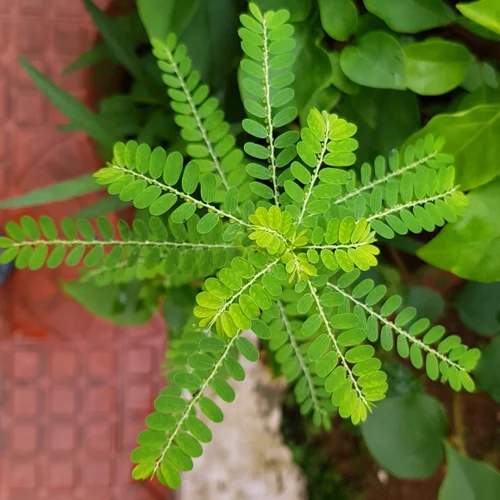Bhumyamalaki
Home
Bhumyamalaki
Bhumyamalaki

BOTANICAL NAME
Phullanthus niruri

FAMILY
euphorbiaceae

SANSKRIT NAME
Bhoodharthi, adhyanda, ajatha

ENGLISH
-

HINDI
Hazarmani, lalbhuinanvalah

KANNADA
Kempu kiranelli

MALAYALAM
kizharnelli

TELUGU
Erra usirika

TAMIL
Shivappunelli

MARATHI
Bhuiavala
DISTRIBUTION

It is a native to tropical east asia and is a weed to tropical areas. It is commonly found in open areas.
PARTS USED
Panchaanga
DOSE
Swarasa: 10-15ml, churna : 3-5gm
CHEMICAL CONSTITUENTS
Nirphyllin, phyllnirurin, corilagin, ellagic acid, gallic acid etc

AYURVEDIC PROPERTIES
QUALITY (GUNA)
Laghu and Ruksha.
TASTE (RASA)
Tikta, Kashaya, Madhura
METABOLISM (VIPAKA)
Madhura
POTENCY (VIRYA)
Sheetha
IMPACT (PRABHAVA)
Mutra-Virechaniya
PHARMACOLOGICAL ACTION
- It is a diuretic and thus helpful in urinary tract disorders.
- It is helpful in diarrhea.
- Its hypogycaemic properties helps in lowering blood sugar level in the body.
- It is a good appetizer and helps in improving digestive problems.
- It has anticancerous property helping in curing cancer.
- It is hepatoprotective and thus cures liver disorders and certain metabolic disorders
THERAPEUTIC USES
- Leucorrhea: bhumyamalaki powder must be taken along with rice water in gynecological disorders.
- Paste of its leaves is applied on wounds, edema and dermatitis.
- Fractures: its leaves is crushed with rock salt and is applied over the fracture region.
- Powder of leaves and roots is made as poultice along with rice water over edematous swelling.
SOME OF THE COMMON FORMULATIONS
- Bhumyamalaki churna
- Amritaprasha ghrita etc
